
The Timeless Wonders of Petrified Forest National Park
Discover the ancient beauty of Petrified Forest National Park, where fossilized trees and colorful badlands create a stunning, otherworldly landscape in Arizona.
Petrified Forest National Park is a mesmerizing natural wonder located in northeastern Arizona. This park is famous for its vast deposits of petrified wood, dating back over 200 million years. As you explore the park, you will be amazed by the colorful and intricate patterns within the fossilized trees, which have turned to stone over the millennia. The park's landscape is a stunning mix of badlands, grasslands, and desert, creating a unique and picturesque setting. Aside from the petrified wood, the park is also home to the Painted Desert, an expansive area of brilliantly colored badlands that stretch as far as the eye can see. The hues of red, yellow, and purple create a surreal and otherworldly atmosphere, especially during sunrise and sunset. The park's diverse ecosystems support a variety of wildlife, including pronghorns, lizards, and numerous bird species, making it a great destination for nature enthusiasts. Petrified Forest National Park also holds significant cultural and historical importance. The area has been inhabited by humans for thousands of years, and you can find remnants of ancient civilizations in the form of petroglyphs and ruins. The park's visitor centers offer informative exhibits and displays that provide insights into the geological and human history of the region. Whether you're a geology buff, a history lover, or simply someone who appreciates natural beauty, Petrified Forest National Park offers a unique and enriching experience.
Local tips in Petrified Forest National Park
- Visit the park during sunrise or sunset to see the Painted Desert at its most vibrant.
- Bring plenty of water and sunscreen, as the desert environment can be harsh.
- Stop by the visitor centers to learn about the park's geology and history before exploring.
- Wear comfortable walking shoes, as there are several trails to explore.
- Look out for wildlife, especially in the early morning or late afternoon.
The Timeless Wonders of Petrified Forest National Park
Petrified Forest National Park is a mesmerizing natural wonder located in northeastern Arizona. This park is famous for its vast deposits of petrified wood, dating back over 200 million years. As you explore the park, you will be amazed by the colorful and intricate patterns within the fossilized trees, which have turned to stone over the millennia. The park's landscape is a stunning mix of badlands, grasslands, and desert, creating a unique and picturesque setting. Aside from the petrified wood, the park is also home to the Painted Desert, an expansive area of brilliantly colored badlands that stretch as far as the eye can see. The hues of red, yellow, and purple create a surreal and otherworldly atmosphere, especially during sunrise and sunset. The park's diverse ecosystems support a variety of wildlife, including pronghorns, lizards, and numerous bird species, making it a great destination for nature enthusiasts. Petrified Forest National Park also holds significant cultural and historical importance. The area has been inhabited by humans for thousands of years, and you can find remnants of ancient civilizations in the form of petroglyphs and ruins. The park's visitor centers offer informative exhibits and displays that provide insights into the geological and human history of the region. Whether you're a geology buff, a history lover, or simply someone who appreciates natural beauty, Petrified Forest National Park offers a unique and enriching experience.
When is the best time to go to Petrified Forest National Park?
Iconic landmarks you can’t miss
Painted Desert Visitor Center
Explore the stunning Painted Desert Visitor Center and immerse yourself in the natural beauty and rich history of Petrified Forest National Park.

Painted Desert Inn
Explore the Painted Desert Inn, a historic museum nestled in Petrified Forest National Park, showcasing stunning landscapes and rich Native American heritage.
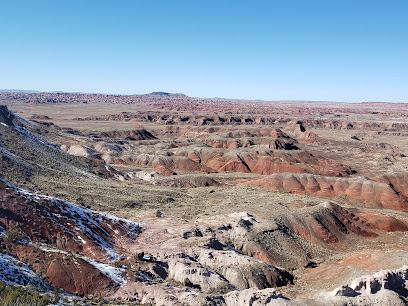
Painted Desert
Experience the breathtaking beauty and vibrant colors of the Painted Desert in Arizona, a hidden gem within the Petrified Forest National Park.
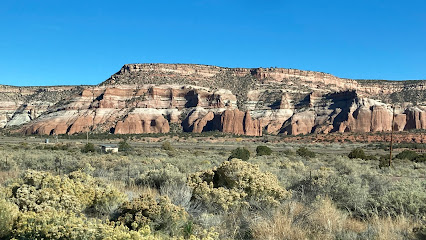
Agate Bridge
Explore Agate Bridge, a breathtaking natural arch of petrified wood in Arizona's Petrified Forest National Park, a must-visit scenic spot for all nature lovers.

Puerco Pueblo
Discover the rich history and stunning landscapes of Puerco Pueblo, an archaeological site in Petrified Forest National Park, Arizona.

Crystal Forest
Discover the stunning beauty of Crystal Forest, where ancient petrified trees and vibrant landscapes come together in Arizona's Petrified Forest National Park.
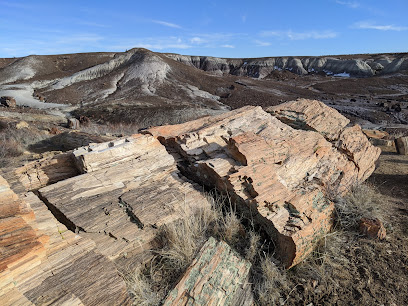
Pintado Point
Explore the vibrant landscapes of Pintado Point in Petrified Forest National Park, a breathtaking vista point showcasing nature's ancient wonders.

Tiponi Point
Experience the stunning panoramas of Tiponi Point in Petrified Forest National Park, where nature's beauty meets ancient history.

Newspaper Rock State Historic Monument
Discover the ancient artistry of Newspaper Rock State Historic Monument, where over 650 petroglyphs reveal the stories of Native American cultures in a stunning natural setting.

Painted Desert Rim Trail
Discover the stunning landscapes and rich geological history at the Painted Desert Rim Trail in Petrified Forest National Park, Arizona.

Kachina Point
Discover the stunning vistas and ancient geological wonders at Kachina Point, a must-visit destination in Petrified Forest National Park, Arizona.
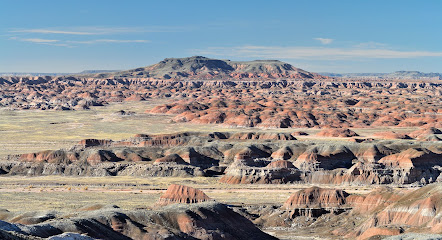
Agate House
Experience the rich history and stunning architecture of Agate House in Holbrook, Arizona, a remarkable testament to Native American heritage and craftsmanship.

Petrified Forest National Wilderness Area
Explore the Petrified Forest National Wilderness Area, where ancient trees turned to stone create a breathtaking landscape of beauty and history in Arizona.

Onyx Bridge
Discover the captivating Onyx Bridge in Petrified Forest National Park, a stunning blend of nature and architectural beauty in Arizona.

Unmissable attractions to see
Painted Desert Visitor Center
Explore the Painted Desert Visitor Center: Your gateway to Arizona's stunning geological wonders and breathtaking landscapes.

Rainbow Forest Museum
Experience the prehistoric beauty of the Rainbow Forest Museum, where petrified wood and ancient history come alive in Arizona's stunning landscapes.

Painted Desert Inn
Explore the rich history and stunning landscapes at Painted Desert Inn, a historic gem in Petrified Forest National Park, Arizona.

Painted Desert Indian Center
Experience the vibrant artistry of Native American culture at the Painted Desert Indian Center, featuring unique handicrafts, jewelry, and rugs.

Painted Desert
Explore the vibrant landscapes and rich geological history of the Painted Desert, a stunning natural wonder in Arizona's Petrified Forest National Park.

Agate Bridge
Discover the breathtaking beauty of Agate Bridge, a stunning natural arch in Petrified Forest National Park, rich in geological history and scenic views.

Puerco Pueblo
Explore Puerco Pueblo in Petrified Forest National Park, a historic site revealing the rich heritage of the Ancestral Puebloans amidst stunning desert landscapes.

Blue Mesa Trailhead
Experience the breathtaking landscapes and unique geological formations at Blue Mesa Trailhead, Arizona's premier hiking destination for nature lovers and adventurers.
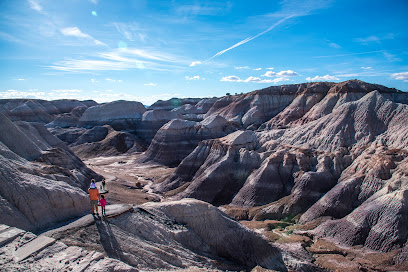
Jasper Forest
Explore Jasper Forest in Arizona, a breathtaking natural attraction featuring ancient petrified wood and stunning desert vistas.

Crystal Forest
Discover the breathtaking petrified wood and vibrant landscapes of Crystal Forest in Petrified Forest National Park, a true natural wonder in Arizona.

Tiponi Point
Discover the stunning vistas and geological wonders at Tiponi Point in Petrified Forest National Park, an unforgettable experience in Arizona's majestic landscapes.

Newspaper Rock State Historic Monument
Explore the rich history and ancient petroglyphs at Newspaper Rock State Historic Monument in Arizona's Petrified Forest National Park.

Painted Desert Rim Trail
Explore the breathtaking Painted Desert Rim Trail in Petrified Forest National Park, where vibrant landscapes and serene hiking await.

Giant Logs Trail
Explore the stunning Giant Logs Trail in Holbrook, AZ, where ancient petrified wood meets breathtaking landscapes in a perfect hiking adventure.

Kachina Point
Experience breathtaking views and the rich geological history at Kachina Point in Petrified Forest National Park, Arizona.

Markets, malls and hidden boutiques
Painted Desert Visitor Center
Explore the Painted Desert Visitor Center, your gateway to the breathtaking landscapes and rich geology of Petrified Forest National Park.
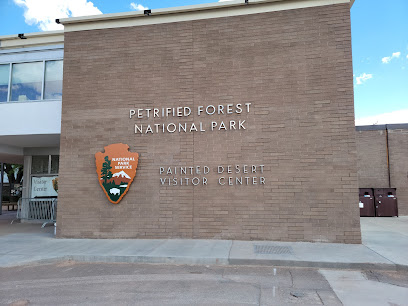
Painted Desert Inn
Explore the Painted Desert Inn, a historic museum nestled in Petrified Forest National Park, showcasing nature's beauty and cultural heritage.

Geronimo Trading Post
Explore the vibrant world of Native American crafts at the Geronimo Trading Post, a treasure trove of authentic goods in Arizona.

Jim Gray's Petrified Wood Co
Explore the ancient beauty of petrified wood and unique geological treasures at Jim Gray's Petrified Wood Co in Holbrook, Arizona.

Painted Desert Indian Center
Explore Native American artistry at the Painted Desert Indian Center, where handcrafted jewelry and rugs tell stories of culture and tradition.

Painted Desert
Discover the breathtaking beauty of the Painted Desert, where vibrant colors and unique geological formations create a stunning natural landscape in Arizona.

Petrified Forest Gift Shop
Explore the Petrified Forest Gift Shop for unique souvenirs and local crafts that capture the essence of Arizona's stunning landscapes.

Grays Rock Shop
Discover the captivating world of natural wonders at Grays Rock Shop, Holbrook's treasure trove of rocks, gems, and minerals.

Crystal Forest Museum & Gifts
Explore the enchanting Crystal Forest Museum & Gifts in Holbrook, AZ, for unique treasures and insights into the region's geological wonders.

Stewart's Petrified Wood Shop
Explore the enchanting Stewart's Petrified Wood Shop in Holbrook, Arizona, where nature's beauty transforms into timeless treasures.

Rainbow Rock Shop
Explore the stunning collection of rocks, minerals, and fossils at the Rainbow Rock Shop in Holbrook, Arizona—an unforgettable journey for every rock enthusiast.

Petrified Forest Trading Company
Explore local crafts, savor delicious meals, and recharge at the Petrified Forest Trading Company—your gateway to the wonders of Petrified Forest National Park.

Petrified Smoke Shop
Discover the eclectic charm of Petrified Smoke Shop in Holbrook, Arizona, where unique vaporizers and local gifts await every visitor.

Mini Mart, Antique
Explore the eclectic offerings of Mini Mart, Antique in Holbrook, AZ, where unique groceries meet charming antiques for an unforgettable shopping experience.

Painted Desert Diner
Experience the charm of American cuisine with breathtaking views at the Painted Desert Diner in Petrified Forest National Park.

Essential bars & hidden hideouts
Painted Desert Visitor Center
Explore the Painted Desert Visitor Center, your gateway to the breathtaking landscapes and rich history of Petrified Forest National Park.
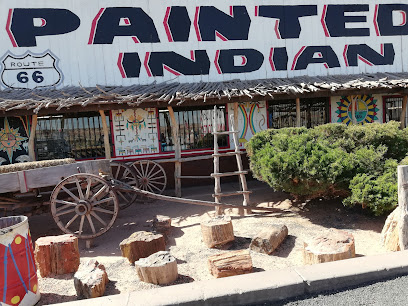
RelicRoad Brewing Company
Experience the vibrant atmosphere and unique craft brews at RelicRoad Brewing Company in Winslow, Arizona, a perfect stop for beer enthusiasts and food lovers.

Tom & Suzie's Diner
Experience the charm of Tom & Suzie's Diner in Holbrook, where family-friendly dining meets classic American comfort food.
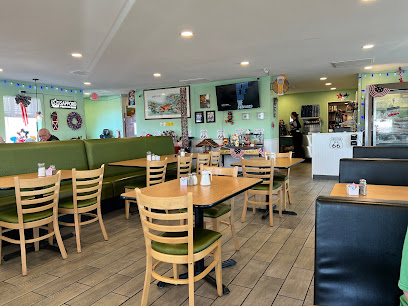
Mesa Italiana Restaurant
Savor authentic Italian cuisine at Mesa Italiana Restaurant in Holbrook, where every meal is a delicious journey through Italy's culinary heritage.

Romo's Restaurant
Experience the true taste of Mexico at Romo's Restaurant in Holbrook, AZ, where every dish is a celebration of authentic flavors and vibrant culture.

Bienvenidos Restaurant
Experience the finest American cuisine at Bienvenidos Restaurant in Holbrook, Arizona, where comfort food meets friendly service.
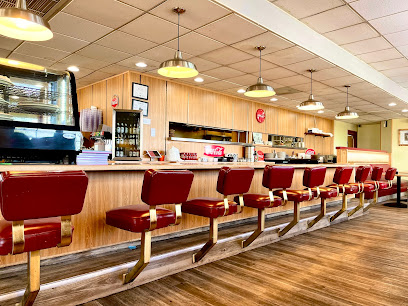
Painted Desert Inn
Explore the Painted Desert Inn, a historical gem in Arizona's Petrified Forest National Park, showcasing unique architecture and rich cultural heritage.

Turquoise Room
Experience the vibrant Southwestern flavors at the Turquoise Room, a unique dining destination in Winslow, Arizona.

Carl’s Jr.
Savor the taste of classic American fast food at Carl's Jr. in Holbrook, where delicious burgers meet friendly service.

Popeyes Louisiana Kitchen
Experience the rich flavors of Louisiana at Popeyes in Holbrook, AZ - a perfect stop for delicious fried chicken and seafood.

Mr Maestas
Experience a culinary delight at Mr. Maestas in Holbrook, AZ, where authentic Mexican flavors meet American comfort food in a charming setting.
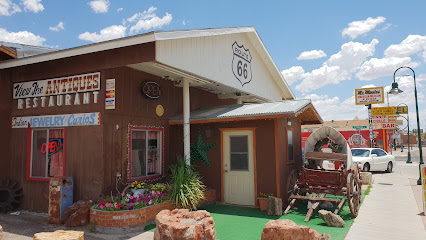
El Rancho Restaurant & Motel
Experience the rich flavors of American and Mexican cuisine at El Rancho Restaurant & Motel, a charming stop along Route 66 in Holbrook, Arizona.

Camaleon Cafe
Experience the flavors of Holbrook at Camaleon Cafe, where breakfast is a delicious adventure waiting to be savored.

Painted Desert
Discover the breathtaking hues and geological wonders of the Painted Desert in Arizona's Petrified Forest National Park, a must-visit for nature lovers.

Puerco Pueblo
Uncover the rich history and stunning landscapes at Puerco Pueblo in Petrified Forest National Park, a captivating journey into ancient Native American life.
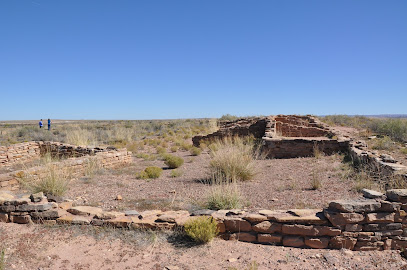
Local Phrases about Petrified Forest National Park
-
- HelloYa'at'eeh
[yah-ah-tay] - GoodbyeHágoónee'
[ha-goo-ney] - YesAhe'
[ah-hay] - NoT'a'á
[ta-ah] - Please/You're welcomeAhe'hee'
[ah-hay-hee] - Thank youAhéhee'
[ah-hay-hee] - Excuse me/SorryAhe'he
[ah-hay-hay] - How are you?Yá'át'ééh?
[yah-ah-tay] - Fine. And you?Hózhǫ́. Áhéhee'
[ho-zhone, ah-hay-hee] - Do you speak English?Bilasáana?
[bee-lah-sah-nah] - I don't understandDíí baa hózhǫ́
[dee bah ho-zhone]
- HelloYa'at'eeh
-
- I'd like to see the menu, pleaseNihí dooleel
[knee-hee doo-leel] - I don't eat meatNaalgai
[nah-ahl-gah-ee] - Cheers!T'áá hwó'ají
[ta-ah hwo-ah-hee] - I would like to pay, pleaseNihí ádoo shiyá
[knee-hee ah-doh shee-yah]
- I'd like to see the menu, pleaseNihí dooleel
-
- Help!Ayóóʼnííshní
[ah-yoh-nee-she-nee] - Go away!Aheehe'
[ah-hay-hay] - Call the Police!Dikos Náhást'éí
[dee-kohs nah-has-tay] - Call a doctor!Dikos Dóó Haz'áanii
[dee-kohs doo hah-zah-nee] - I'm lostNaʼnízhoozhí
[nah-neez-hoh-zhee] - I'm illIiná
[ee-nah]
- Help!Ayóóʼnííshní
-
- I'd like to buy...Nihí yeeʼal
[knee-hee yee-ahl] - I'm just lookingNihí dooleel
[knee-hee doo-leel] - How much is it?Hádóóda?
[ha-doh-dah] - That's too expensiveBééhózin
[beh-ho-zeen] - Can you lower the price?T'áá hwó'ají
[ta-ah hwo-ah-hee]
- I'd like to buy...Nihí yeeʼal
-
- What time is it?T'áá hwó'ají
[ta-ah hwo-ah-hee] - It's one o'clockT'áá hwó'ají
[ta-ah hwo-ah-hee] - Half past (10)Yá'aal'ąą'
[yah-ahl-ahn] - MorningYííh
[yee] - AfternoonBik'ehgo
[beek-eh-go] - EveningT'áá'íích'į́į́'
[ta-ah-ee-chee-ee] - YesterdayAak'eedgo
[ah-kee-d-go] - TodayÉízh
[ay-zh] - TomorrowTózí
[toh-zee] - 1Deezbaa
[dee-zbah] - 2Naaki
[nah-kee] - 3Táá'íí
[ta-ah-ee] - 4Dį́į́ʼ
[dih-ee] - 5Hádí
[hah-dee] - 6Tsin
[tsin] - 7Tłʼógóó
[tlo-go] - 8Tłʼizh
[tleezh] - 9Dį́į́ʼ
[dih-ee] - 10Ndaaʼ
[nah-ah]
- What time is it?T'áá hwó'ají
-
- Where's a/the...?Ahe'hee'
[ah-hay-hee] - What's the address?Ahe'hee'
[ah-hay-hee] - Can you show me (on the map)?Ahe'hee'
[ah-hay-hee] - When's the next (bus)?Ahe'hee'
[ah-hay-hee] - A ticket (to ....)Ahe'hee'
[ah-hay-hee]
- Where's a/the...?Ahe'hee'
History of Petrified Forest National Park
-
Approximately 225 million years ago, during the Late Triassic period, the region that is now Petrified Forest National Park was home to a lush, subtropical forest. The area was filled with towering conifer trees, ferns, and other plants, thriving along river systems. Over time, these trees fell and were buried under layers of sediment, where they underwent the process of petrification, turning into the colorful stone logs that visitors see today.
-
Long before European settlers arrived, the area around Petrified Forest National Park was inhabited by Indigenous peoples. Archaeological evidence suggests that the Ancestral Puebloans lived in the region as early as 8,000 years ago. They left behind remarkable artifacts such as petroglyphs, pottery, and tools, which can be seen in various locations throughout the park. The Painted Desert Inn, once a lodge and now a museum, showcases many of these artifacts and provides insight into the lives of the early inhabitants.
-
In the late 19th and early 20th centuries, the petrified wood of the region began to attract the attention of explorers, scientists, and collectors. Notable figures such as John Muir, the famous naturalist, and paleontologist Charles L. Camp conducted significant studies of the petrified wood and the fossils found in the area. Their work helped to increase awareness of the scientific and historical value of the region, leading to efforts to protect it.
-
On December 8, 1906, President Theodore Roosevelt designated the area as Petrified Forest National Monument to protect its unique geological and paleontological features. This designation was a critical step in preserving the park’s fossilized trees and other natural wonders from exploitation and destruction. The monument status helped to ensure that the petrified wood and other significant resources would be safeguarded for future generations.
-
In 1962, Congress passed legislation to redesignate Petrified Forest National Monument as Petrified Forest National Park. This elevation in status reflected the growing recognition of the area's broader ecological and cultural significance. The expansion included additional land that encompasses the stunning Painted Desert, providing a more comprehensive protection of the region's diverse landscapes and historical sites.
-
Today, Petrified Forest National Park is a focal point for ongoing conservation and scientific research. The park's management works tirelessly to protect its fragile ecosystems, historical artifacts, and geological formations. Efforts include preventing illegal collection of petrified wood, preserving ancient petroglyphs, and conducting research on climate change impacts. These initiatives ensure that the park remains a treasured resource for education and enjoyment.
Petrified Forest National Park Essentials
-
Petrified Forest National Park is located in northeastern Arizona. The nearest major airport is Phoenix Sky Harbor International Airport, approximately 200 miles away. From Phoenix, you can rent a car and drive to the park, which takes about 3.5 to 4 hours. Another option is to fly into Albuquerque International Sunport in New Mexico, which is about 200 miles to the east. From Albuquerque, the drive to the park also takes about 3.5 to 4 hours. There are no direct public transportation options to the park, so renting a car is the most convenient method.
-
Within Petrified Forest National Park, the best way to get around is by car. The park features a 28-mile scenic drive that connects the north and south entrances, with numerous pullouts and viewpoints. Bicycles are allowed on paved roads, but not on trails. There is no public transportation inside the park. For those who prefer guided tours, several private companies offer them from nearby cities such as Holbrook and Flagstaff.
-
The official currency in the United States is the US Dollar (USD). Credit and debit cards are widely accepted, including at the park's visitor centers, gift shops, and entrance stations. ATMs can be found in nearby towns like Holbrook, but it’s advisable to carry some cash for smaller purchases or in case of network issues affecting card transactions.
-
Petrified Forest National Park is generally a safe destination for tourists. However, always lock your vehicle and keep valuables out of sight to prevent theft. While the park itself is safe, be cautious in nearby towns after dark, especially in isolated areas. Always stay hydrated and be aware of weather conditions, as the desert environment can be extreme. Avoid hiking alone and inform someone of your plans if you venture into less trafficked areas.
-
In case of emergency, dial 911 for immediate assistance. The park has limited cell phone service, so it’s advisable to carry a map and know your location. Visitor centers have first aid kits and rangers are trained to handle emergencies. The closest medical facilities are in Holbrook, about 25 miles west of the park. Always carry a basic first aid kit and ensure you have sufficient water and food supplies.
-
Fashion: Do wear comfortable, weather-appropriate clothing and sturdy footwear. Don't forget sunscreen and a hat to protect against the desert sun. Religion: Do respect local customs and any Native American sites within the park. Public Transport: Not applicable within the park. Greetings: Do greet fellow visitors and park staff with a friendly nod or hello. Eating & Drinking: Do carry sufficient water and snacks. Don’t litter; use designated trash bins to keep the park clean.
-
To experience Petrified Forest National Park like a local, visit early in the morning or late in the afternoon to avoid crowds and enjoy cooler temperatures. Explore lesser-known trails such as the Blue Mesa Trail for stunning, less crowded views. Take time to visit the Painted Desert Inn, a historic landmark that offers insight into the park's history and culture. Engage with park rangers during their interpretive programs to deepen your understanding of the park’s unique geology and ecology.
Trending Landmarks in Petrified Forest National Park
Nearby Cities to Petrified Forest National Park
-
Things To Do in Gallup
-
Things To Do in Flagstaff
-
Things To Do in Sedona
-
Things To Do in Farmington
-
Things To Do in Grand Canyon Village
-
Things To Do in Prescott
-
Things To Do in Page
-
Things To Do in Scottsdale
-
Things To Do in Mesa
-
Things To Do in Gilbert
-
Things To Do in Tempe
-
Things To Do in Chandler
-
Things To Do in Phoenix
-
Things To Do in Albuquerque
-
Things To Do in Blanding













